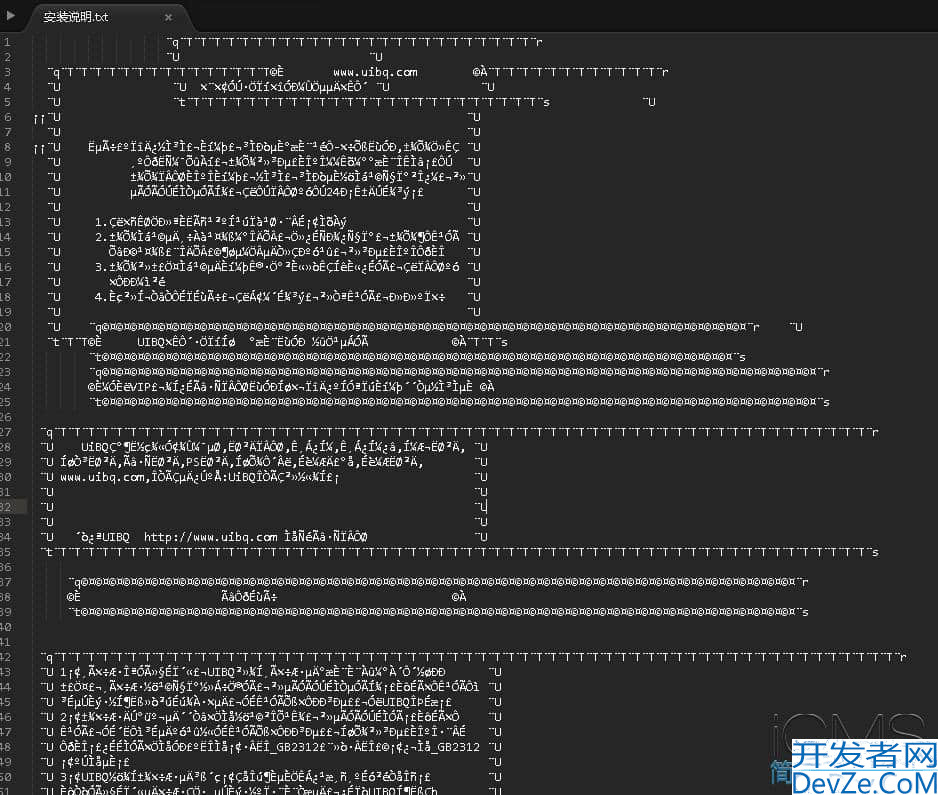使用FastAPI构建高性能RESTful API的完整指南
目录
- 引言
- 为什么选择FastAPI
- 环境搭建
- 安装依赖
- 第一个API应用
- 核心概念
- 路径参数
- 查询参数
- 请求体
- 数据验证
- 使用Field进行高级验证
- 使用Query、Path和Body
- 响应模型
- 定义响应结构
- 多种响应状态码
- 错误处理
- 抛出HTTP异常
- 自定义异常处理器
- 依赖注入
- 基础依赖
- 类作为依赖
- 数据库会话依赖
- 认证和授权
- JWT认证示例
- OAuth2密码流
- 数据库集成
- 中间件
- 添加CORS中间android件
- 自定义中间件
- 后台任务
- 文件上传和下载
- 文件上传
- 多文件上传
- 测试
- 性能优化
- 使用异步操作
- 数据库查询优化
- 响应缓存
- 部署
- 使用docker
- 生产环境配置
- 环境变量配置
- 最佳实践
- 项目结构
- 使用APIRouter组织路由
- 版本控制
- 总结
引言
FastAPI是一个现代、高性能的python Web框架,专为构建API而设计。它基于标准的Python类型提示,提供了自动的API文档生成、数据验证和序列化等强大功能。本指南将带你从基础到高级,全面掌握FastAPI的使用。
为什么选择FastAPI
FastAPI相比其他框架有以下显著优势:
- 高性能: 性能可与Nodejs和Go媲美,是最快的Python框架之一
- 开发效率高: 比传统框架减少约40%的开发时间
- 自动文档: 自动生成交互式API文档(Swagger UI和ReDoc)
- 类型安全: 基于Python类型提示,提供编辑器自动补全和类型检查
- 标准化: 基于OpenAPI和JSON Schema标准
- 异步支持: 原生支持async/await语法
环境搭建
安装依赖
# 创建虚拟环境 python -m venv venv source venv/bin/activate # Windows: venv\Scripts\activate # 安装FastAPI和ASGI服务器 pip install fastapi pip编程客栈 install "uvicorn[standard]"
第一个API应用
创建main.py文件:
from fastapi import FastAPI
app = FastAPI()
@app.get("/")
async def root():
return {"message": "Hello World"}
运行应用:
uvicorn main:app --reload
访问http://localhost:8000即可看到返回结果,访问http://localhost:8000/docs可以看到自动生成的交互式文档。
核心概念
路径参数
@app.get("/items/{item_id}")
async def read_item(item_id: int):
return {"item_id": item_id}
FastAPI会自动进行类型转换和验证,如果item_id不是整数,会返回清晰的错误信息。
查询参数
@app.get("/items/")
async def read_items(skip: int = 0, limit: int = 10):
return {"skip": skip, "limit": limit}
查询参数在URL中以?skip=0&limit=10的形式传递。
请求体
使用Pydantic模型定义请求体:
from pydantic import BaseModel
class Item(BaseModel):
name: str
description: str | None = None
price: float
tax: float | None = None
@app.post("/items/")
async def create_item(item: Item):
return item
Pydantic会自动验证请求数据,并提供清晰的错误提示。
数据验证
使用Field进行高级验证
from pydantic import BaseModel, Field
class Item(BaseModel):
name: str = Field(..., min_length=1, max_length=100)
price: float = Field(..., gt=0, description="价格必须大于0")
quantity: int = Field(default=1, ge=1, le=1000)
tags: list[str] = Field(default_factory=list)
使用Query、Path和Body
from fastapi import Query, Path, Body
@app.get("/items/{item_id}")
async def read_item(
item_id: int = Path(..., title="商品ID", ge=1),
q: str | None = Query(None, min_length=3, max_length=50),
size: int = Query(default=10, le=100)
):
return {"item_id": item_id, "q": q, "size": size}
响应模型
定义响应结构
class ItemResponse(BaseModel):
id: int
name: str
price: float
class Config:
from_attributes = True
@app.post("/items/", response_model=ItemResponse)
async def create_item(item: Item):
# 假设保存到数据库后返回
return {"id": 1, **item.dict()}
多种响应状态码
from fastapi import status
@app.post("/items/", status_code=status.HTTP_201_CREATED)
async def create_item(item: Item):
return item
@app.delete("/items/{item_id}", status_code=status.HTTP_204_NO_CONTENT)
async def delete_item(item_id: int):
return None
错误处理
抛出HTTP异常
from fastapi import HTTPException
@app.get("/items/{item_id}")
async def read_item(item_id: int):
if item_id not in items_db:
raise HTTPException(
status_code=404,
detail="商品未找到",
headers={"X-Error": "Item not found"}
)
return items_db[item_id]
自定义异常处理器
from fastapi.responses import JSONResponse
from fastapi import Request
class CustomException(Exception):
def __init__(self, name: str):
self.name = name
@app.exception_handler(CustomException)
async def custom_exception_handler(request: Request, exc: CustomException):
return JSONResponse(
status_code=418,
content={"message": f"处理 {exc.name} 时出错"}
)
依赖注入
基础依赖
from fastapi import Depends
async def common_parameters(q: str | None = None, skip: int = 0, limit: int = 100):
return {"q": q, "skip": skip, "limit": limit}
@app.get("/items/")
async def read_items(commons: dict = Depends(common_parameters)):
return commons
类作为依赖
class Pagination:
def __init__(self, skip: int = 0, limit: int = 100):
self.skip = skip
self.limit = limit
@app.get("/users/")
async def read_users(pagination: Pagination = Depends()):
return {"skip": pagination.skip, "limit": pagination.limit}
数据库会话依赖
from sqlalchemy.orm import Session
def get_db():
db = SessionLocal()
try:
yield db
finally:
db.close()
@app.get("/users/")
async def read_users(db: Session = Depends(get_db)):
users = db.query(User).all()
return users
认证和授权
JWT认证示例
from fastapi.security import HTTPBearer, HTTPAuthorizationCredentials
from fastapi import Security
import jwt
security = HTTPBearer()
def verify_token(credentials: HTTPAuthorizationCredentials = Security(security)):
token = credentials.credentials
try:
payload = jwt.decode(token, SECRET_KEY, algorithms=["HS256"])
return payload
except jwt.InvalidTokenError:
raise HTTPException(status_code=401, detail="无效的token")
@app.get("/protected/")
async def protected_route(payload: dict = Depends(verify_token)):
return {"user": payload["sub"]}
OAuth2密码流
from fastapi.security import OAuth2PasswordBearer, OAuth2PasswordRequestForm
oauth2_scheme = OAuth2PasswordBearer(tokenUrl="token")
@app.post("/token")
async def login(form_data: OAuth2PasswordRequestForm = Depends()):
# 验证用户名和密码
user = authenticate_user(form_data.username, form_data.password)
if not user:
raise HTTPException(status_code=401, detail="用户名或密码错误")
Access_token = create_access_token(data={"sub": user.username})
return {"access_token": access_token, "token_type": "bearer"}
数据库集成
SQLAlchemy集成
from sqlalchemy import create_engine, Column, Integer, String
from sqlalchemy.ext.declarative import declarative_base
from sqlalchemy.orm import sessionmaker
SQLALCHEMY_DATABASE_URL = "SQLite:///./test.db"
engine = create_engine(SQLALCHEMY_DATABASE_URL)
SessionLocal = sessionmaker(autocommit=False, autoflush=False, bind=engine)
Base = declarative_base()
class User(Base):
__tablename__ = "users"
id = Column(Integer, primary_key=True, index=True)
email = Column(String, unique=True, index=True)
name = Column(String)
Base.metadata.create_all(bind=engine)
@app.post("/users/")
def create_user(user: UserCreate, db: Session = Depends(get_db)):
db_user = User(**user.dict())
db.add(db_user)
db.commit()
db.refresh(db_user)
return db_user
中间件
添加CORS中间件
from fastapi.middleware.cors import CORSMiddleware
app.add_middleware(
CORSMiddleware,
allow_origins=["http://localhost:3000"],
allow_credentials=True,
allow_methods=["*"],
allow_headers=["*"],
)
自定义中间件
from fastapi import Request
import time
@app.middleware("http")
async def add_process_time_header(request: Request, call_next):
start_time = time.time()
response = await call_next(request)
process_time = time.time() - start_time
response.headers["X-Process-Time"] = str(process_time)
return response
后台任务
from fastapi import BackgroundTasks
def write_log(message: str):
with open("log.txt", mode="a") as log:
log.write(message + "\n")
@app.post("/send-notification/")
async def send_notification(
email: str,
background_tasks: BackgroundTasks
):
background_tasks.add_task(write_log, f"通知发送到: {email}")
return {"message": "通知将在后台发送"}
文件上传和下载
文件上传
from fastapi import File, UploadFile
@app.post("/uploadfile/")
async def create_upload_file(file: UploadFile = File(...)):
contents = await file.read()
return {
"filename": file.filename,
"content_type": file.content_type,
"size": len(contents)
}
多文件上传
@app.poKnAIfvst("/uploadfiles/")
async def create_upload_files(files: list[UploadFile] = File(...)):
return [{"filename": file.filename} for file in files]
测试
使用TestClient
from fastapi.testclient import TestClient
client = TestClient(app)
def test_read_main():
response = client.get("/")
assert response.status_code == 200
assert response.json() == {"message": "Hello World"}
def test_create_item():
response = client.post(
"/items/",
json={"name": "测试商品", "price": 99.99}
)
assert response.status_code == 201
assert response.json()["name"] == "测试商品"
性能优化
使用异步操作
import httpx
@app.get("/external-api/")
async def call_external_api():
async with httpx.AsyncClient() as client:
response = await client.get("https://api.example.com/data")
return response.json()
数据库查询优化
from sqlalchemy.orm import joinedload
@app.get("/users/{user_id}/posts/")
def get_user_posts(user_id: int, db: Session = Depends(get_db)):
# 使用eager loading避免N+1查询问题
user = db.query(User).options(
joinedload(User.posts)
).filter(User.id == user_id).first()
return user.posts
响应缓存
from functools import lru_cache
@lru_cache(maxsize=128)
def get_settings():
return Settings()
@app.get("/settings/")
def read_settings(settings: Settings = Depends(get_settings)):
return settings
部署
使用Docker
创建Dockerfile:
FROM python:3.11-slim WORKDIR /app COPY requirements.txt . RUN pip install --no-cache-dir -r requirements.txt COPY . . CMD ["uvicorn", "main:app", "--host", "0.0.0.0", "--port", "8000"]
生产环境配置
# 使用Gunicorn + Uvicorn workers # 命令行运行: # gunicorn main:app -w 4 -k uvicorn.workers.UvicornWorker --bind 0.0.0.0:8000
环境变量配置
from pydantic_settings import BaseSettings
class Settings(BaseSettings):
app_name: str = "FastAPI应用"
database_url: str
secret_key: str
class Config:
env_file = ".env"
settings = Settings()
最佳实践
项目结构
project/
├── app/│ ├── __init__.py│ ├── main.py│ ├── models/│ │ ├── __init__.py│ │ └── user.py│ ├── schemas/│ │ ├── __init__.py│ │ └── user.py│ ├── routers/│ │ ├── __init__.py│ │ └── users.py│ ├── dependencies.py│ └── database.py├── tests/├── requirements.txt└── .env
使用APIRouter组织路由
from fastapi import APIRouter
router = APIRouter(
prefix="/users",
tags=["users"],
responses={404: {"descripjstion": "Not found"}}
)
@router.get("/")
async def read_users():
return [{"username": "user1"}]
@router.get("/{user_id}")
async def read_user(user_id: int):
return android{"user_id": user_id}
# 在main.py中
app.include_router(router)
版本控制
from fastapi import APIRouter
api_v1 = APIRouter(prefix="/api/v1")
api_v2 = APIRouter(prefix="/api/v2")
@api_v1.get("/items/")
async def get_items_v1():
return {"version": "1.0"}
@api_v2.get("/items/")
async def get_items_v2():
return {"version": "2.0", "data": []}
app.include_router(api_v1)
app.include_router(api_v2)
总结
FastAPI是一个强大而现代的Python Web框架,它结合了高性能、开发效率和优秀的开发者体验。通过本指南,你已经学习了:
- FastAPI的核心概念和基础用法
- 数据验证和序列化
- 依赖注入系统
- 认证和授权
- 数据库集成
- 性能优化技巧
- 生产环境部署
继续深入学习FastAPI的官方文档,并在实际项目中应用这些知识,你将能够构建出高性能、可维护的RESTful API应用。
以上就是使用FastAPI构建高性能RESTful API的完整指南的详细内容,更多关于FastAPI构建高性能API的资料请关注编程客栈(www.devze.com)其它相关文章!






 加载中,请稍侯......
加载中,请稍侯......
精彩评论